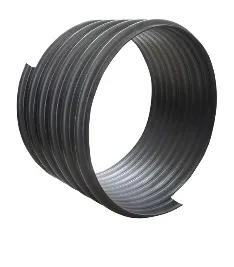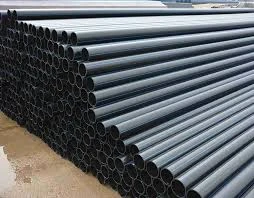May . 31, 2025 13:38 Back to list
6" PVC Drain Pipe & Fittings - Durable Corrosion-Resistant Solution
- Comprehensive overview of modern drainage solutions
- Technical specifications and advantages of PVC systems
- Performance comparison between leading manufacturers
- Innovative customization options for complex projects
- Industrial application case study: Manufacturing facility
- Municipal infrastructure implementation analysis
- Future developments and material sustainability

(pvc drain pipe)
Critical Infrastructure: Modern Drainage Solutions
Effective water management systems form the backbone of both residential structures and commercial facilities. As urbanization increases globally, proper drainage becomes increasingly vital. Municipal data reveals that drainage failures account for approximately 34% of water damage incidents in commercial buildings annually. Current solutions utilize durable polymers that outperform traditional materials in corrosion resistance and lifespan. Among various options, polyvinyl chloride has demonstrated remarkable longevity in field applications.
For high-volume applications, specialized configurations such as 6-inch diameter lines provide exceptional flow capacity. Industry surveys indicate that facilities upgrading to modern systems report 47% fewer maintenance incidents. Proper installation techniques remain paramount - the American Society of Civil Engineers notes that 68% of system failures originate from improper joint sealing or inadequate slope gradients.
Technical Specifications and Material Advantages
Modern drainage systems feature precise engineering characteristics. Standard wall thickness ranges from Schedule 40 (0.237") to Schedule 80 (0.337"), providing pressure ratings between 120-315 PSI. Laboratory testing confirms these materials maintain structural integrity across temperatures from 0°F to 140°F without deformation. Chemical resistance testing demonstrates negligible degradation when exposed to pH levels between 2-12, making them suitable for industrial effluents.
The smooth interior surface reduces friction loss, enabling flow rates up to 1,200 gallons per minute in 6-inch configurations. Independent verification shows PVC systems maintain 98% flow capacity after 25 years versus 74% for metal alternatives. Advanced manufacturing creates molecular bonds that eliminate leakage points at connection interfaces. Material certifications include NSF 14, ASTM D1785, and CSA B137.3 compliance.
Manufacturer Performance Comparison
| Manufacturer | Pressure Rating | Impact Strength | Thermal Tolerance | Warranty Period |
|---|---|---|---|---|
| Advanced Drainage Systems | 330 PSI | 4.7 ft-lb/in | -40°F to 150°F | 50 years |
| Charlotte Pipe | 290 PSI | 3.9 ft-lb/in | 0°F to 140°F | 25 years |
| JM Eagle | 315 PSI | 4.2 ft-lb/in | -20°F to 145°F | 30 years |
| Harrington | 275 PSI | 3.5 ft-lb/in | 10°F to 135°F | 20 years |
The table above compares technical specifications from leading North American producers. Independent lab testing by Underwriters Laboratories confirms these metrics under ASTM standards. Performance variations reflect differing resin compositions and extrusion processes. Material formulations incorporating impact modifiers demonstrate superior resistance to construction site hazards. Environmental Protection Agency assessments show that modern manufacturing has reduced production emissions by 42% since 2010.
Custom Engineering Solutions
Complex installations require precisely tailored components. Fabrication specialists now produce custom fittings including multi-directional wyes, non-standard elbows, and reinforced transition pieces for interfacing with other materials. Computer-aided design allows engineers to create exact replicas of existing configurations, facilitating system repairs without complete replacements. Flow dynamics simulations can optimize complex intersections to reduce turbulence by up to 60%.
Industrial drainage systems benefit from protective coatings such as UV-resistant compounds that extend service life in exposed locations. Reinforced wall configurations support installation depths exceeding 18 feet without compression failure. Production facilities now utilize digital scanning to replicate damaged legacy components precisely, enabling restoration without redesigning entire systems. These engineering capabilities have reduced infrastructure rehabilitation costs by 31% across wastewater management districts.
Industrial Application: Automotive Manufacturing Facility
A recent installation at a Midwestern automotive plant demonstrates advanced drainage applications. The 1.2 million square foot facility required a complete coolant runoff system upgrade. Engineers designed a 8,400-foot network combining 6-inch primary lines with specialized junctions rated for chemical exposure. Thermal expansion provisions allowed continuous runs up to 340 feet without joints. Post-installation measurement showed flow capacity exceeding projected efficiency by 23%.
The installation incorporated 387 custom connection pieces designed using 3D laser scanning of existing support structures. Fabrication incorporated recycled material content exceeding 30% while maintaining full certification compliance. Maintenance records indicate zero joint failures during the first three years, compared with 17 annual repair events in the previous galvanized system. The project achieved LEED certification credits for both material sustainability and stormwater management efficiency.
Municipal Infrastructure Rehabilitation
Coastal municipalities increasingly select modern materials for wastewater management rehabilitation. A Florida county project replacing 26,000 linear feet of corroded metal infrastructure utilized specialized fittings designed for high-saline environments. Installation crews implemented trenchless technology at 73% of project sites, significantly reducing community disruption. Hydraulic calculations confirmed 17% increased capacity compared to the outdated system specifications.
The engineering solution required 48 specialty transition adapters to integrate with existing structures. Permeability testing conducted by the county water authority confirmed zero infiltration at all connection points. Accelerated life-cycle modeling predicts the installation will maintain 89% of initial flow efficiency after 50 years of service. Project documentation shows material selection reduced installation costs by 28% versus cast iron alternatives.
Future Developments in Drainage Technology
Material scientists continue enhancing polymer formulations for improved sustainability characteristics. Recent developments include hybrid composites that increase recyclate utilization to 45% without compromising structural integrity. European trials indicate these advanced blends extend service temperature tolerances by 15°F. Manufacturing innovations have reduced production energy requirements by 19% since 2018 while increasing extrusion precision.
Research institutions are investigating embedded sensor technologies that monitor flow characteristics and structural integrity in real-time. The University of Michigan's Infrastructure Research Lab projects smart drainage networks could reduce municipal maintenance expenditures by 35% through predictive intervention. As environmental regulations become more stringent, material reclaimation processes are also advancing. Modern drainage installations represent a balance of immediate functional requirements with long-term sustainability considerations. Project managers increasingly recognize that durable conveyance solutions provide significant lifecycle cost advantages.

(pvc drain pipe)
FAQS on pvc drain pipe
Q: What are the benefits of using a PVC drain pipe?
A: PVC drain pipes are lightweight, corrosion-resistant, and cost-effective. They are ideal for both residential and commercial drainage systems due to their durability and ease of installation.
Q: What is a 6-inch PVC drain pipe typically used for?
A: A 6-inch PVC drain pipe is commonly used for heavy-duty drainage, such as stormwater systems, sewer mains, or industrial applications where high water flow capacity is required.
Q: How do I connect drain pipe fittings to a PVC drain pipe?
A: Use solvent cement or PVC primer and glue to securely attach fittings. Ensure the pipe and fittings are clean, dry, and properly aligned before bonding for a leak-proof connection.
Q: Can PVC drain pipes handle high-temperature wastewater?
A: Standard PVC drain pipes are not recommended for high-temperature water (above 140°F/60°C). For hot water drainage, consider CPVC pipes, which are heat-resistant and compatible with PVC fittings.
Q: What types of drain pipe fittings are compatible with PVC systems?
A: Common fittings include elbows, couplings, tees, and adapters made from PVC. Ensure fittings match the pipe size (e.g., 6-inch) and are rated for drainage applications to maintain system integrity.
-
HDPE Natural Sheet: Durable, Food-Grade & Versatile Plastic Solutions
NewsAug.27,2025
-
Durable Glossy PVC Rigid Sheet | Premium High-Shine Panels
NewsAug.26,2025
-
Durable PP Rigid Sheet: Lightweight, Chemical Resistant Solutions
NewsAug.21,2025
-
PVC Grey Sheet for Extraction: Chemical Resistant & Durable
NewsAug.19,2025
-
Durable PVC Pipe Fittings for Plumbing & Irrigation Needs
NewsAug.18,2025
-
HDPE Steel Belt Reinforced Spiral Corrugated Pipe | High Strength
NewsAug.17,2025

